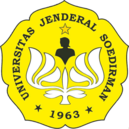Analisis Kontrastif Tindak Tutur Meminta Maaf Dalam Bahasa Jepang Dan Bahasa Sunda
Abstract
In everyday life when someone did a wrong doing, that someone usually performs apologyspeech act to show his/her responsibilityor remorse. However,apology speech act may be conducted using different strategies influenced by several factors, such as cultural background, social values, social statutes, gender, or even the depth of the remorse felt by the wrong doer. This study aims to determine the level of awareness of apology by Japanese Native Speakers (JNS) and Sundanese Native Speakers (SNS) in an apology situation. Apology speech act strategies used in the same situation to five interlocutors namely 1) Distant lecturer (DT), 2) Closelecturer (DA), 3) Distant senior (KT), 4) Close senior (KA), and 5) Friend (T) were also examined. A Likert scale questionnaire was used to find out about the level of awareness of apology, while Discourse Completion Test (DCT) was conducted to examine about apology speech act strategies used by seventy four (74) JNS and seventy eight (78) SNS participated in the data collection of this study. From the results, the awareness of apology between JNS and SNS both different according to the interlocutors. While in apology strategies used, both JNS and SNS mainly used the expression of apology, acknowledgment of responsibility and offer of compensation. However, there is one striking difference strategy in apologizing between JNS and SNS. SNS frequently used address terms while JNS barely used address terms to their interlocutors.
References
Barnlud, D. & Yoshioka, M. (1990). Apologies: Japanese and American Styles. International Journal of intercultural Relations, 14, 193-205
Beuckmann, F. & Mori, K. (2018). Analysis of Speech Level in Japanese: Power and Rank of Imposition on Request, Invitation, and Apology between Close Participants. Shakai Gengo Kagaku, 21 (1), 225-238.
Erlangga, H. (2010). Analisis Kontrastif Ungkapan Sumimasen Bahasa Jepang Dengan Ungkapan Punten Bahasa Sunda Dari Segi Makna dan Penggunaan. Skripsi. Universitas Komputer Indonesia.
Haristiani, N. (2014). Analisis Perbandingan Perilaku Berbahasa Meminta Maaf dalam Bahasa Jepang dan Bahasa Indonesia – Perbedaan strategi yang digunakan dalam situasi “Bersalah” dan “Salah faham”. Prosiding Seminar Tahunan Linguistik UPI 2014 (SETALI 2014).
Haristiani, N. (2010). Indonesiago to Niongo no Shazai Koodoo no Taishoo Kenkyuu. Unpublished Thesis. Hiroshima University: Hiroshima.
Hayati, N. (2013). Analisis Kontrastif Kotowari Hyougen Antara Pembelajar Bahasa Jepang Dan Penutur Asli. ASPBJI Jabar Proceeding, pp. 1-17.
Hikmah, I. (2015). Ketika Orang Jawa Meminta Maaf Dengan Menggunakan Bahasa Inggris Dari Perspektif Tindak Tutur. Jurnal Linguistik dan Pendidikan, 5 (2).
Mikako, S. (2015). Gokai ya Gaiteki Yooin ni Motoduku Iware no nai Hinan ni Taisuru Gengo Koodoo: Bijinesu Bamen ni Okeru Shakaijin, Gakusei no Hikaku Kara. Yokohama Shouka Daigaku Kiyou, 11, 115-116.
Searle, J. (1979). Expression and Meaning: Studies in the Theory of Speech Act. Cambridge University Press.
Sari, W. A. (2018). Analisis Kontrastif Ungkapan Meminta Maaf Dalam Bahasa Jepang dan Bahasa Sunda. Tesis. Universitas Pendidikan Indonesia.
Wulandary, D. (2016). Analisis Kontrastif Strategi Tindak Tutur Permintaan Maaf Bahasa Jepang Dan Bahasa Indonesia. Tesis. Universitas Pendidikan Indonesia.
Authors who publish with Jurnal Ilmiah Lingua Idea agree to the following terms:
- Authors retain copyright and grant the journal right of first publication with the work simultaneously licensed under a Creative Commons Attribution License (CC BY-SA 4.0) that allows others to share the work with an acknowledgment of the work's authorship and initial publication in this journal.
- Authors are able to enter into separate, additional contractual arrangements for the non-exclusive distribution of the journal's published version of the work (e.g., post it to an institutional repository or publish it in a book), with an acknowledgment of its initial publication in this journal.
- Authors are permitted and encouraged to post their work online (e.g., in institutional repositories or on their website) prior to and during the submission process, as it can lead to productive exchanges, as well as earlier and greater citation of published work.






















.png)






